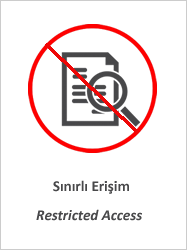Studies of mechanism, kinetic model and determination of bupivacaine and its application pharmaceutical forms
Özet
Bupivacaine, a local anesthetic that is often preferred in many wide ophthalmology applications, was investigated from different aspects such as electrochemical behavior, kinetic model, mechanism illumination, and analytical applications by cyclic voltammetry (CV) and square wave stripping voltammetry (SWSV) methods on glassy carbon electrode (GCE). Bupivacaine exhibited a well-defined anodic signal at nearly 850 mV, an irreversible and adsorption-controlled electrode process. Furthermore, a sensitive and selective SWSV method with a linear working range of 0.3-12.5 mg/L was developed for bupivacaine determination. Limits of detection (LOQ) and that of determination (LOD) were analyzed as 85 and 282 mu g/L, respectively. In addition, the most probable study mechanism was carried out for the first time by this study. The selectivity of some co-existences such as heavy metals, ketotifen, moxifloxacin, ciprofloxacin, cyclopentanate and tropicamide was studied in 1 mg/L bupivacaine determination. They did not have a serious effect on bupivacaine determination at 5% tolerance limits. Otherwise, bupivacaine was successfully analyzed in matrix samples without any pretreatment by the proposed SWSV. Consequently, a fast, reliable, inexpensive, portable, eco-friendly, and sensitive new method has been developed to analyze bupivacaine in real samples.
















